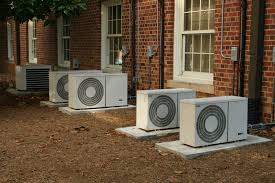Register for free and continue reading
Join our growing army of changemakers and get unlimited access to our premium content
And the living is easy – with all due respect to George Gershwin that “ain’t necessarily so” for energy managers. OK the clients aren’t all complaining that they’re “freezing” and sitting in the dark but there will be a number who are complaining that they are too hot. (I will never understand why people who demand 23C in winter also demand 17C (well they’d probably find 19C acceptable) the moment the sun shines . As 1C equates to something like 10% of usage their preferences add over 20% to the annual energy bill compared to holding at 21C for occupied time in both Winter & Summer – and some would argue that that figure is “too comfortable”). There will be some who are complaining that the sun is so bright they cannot see and they can’t turn off the lights because they’re on presence detectors (that is something that you can do something about by using photocells to dim the lights and/or including “off” switches but see “But it is Saving Energy”) and maybe the blinds don’t close.
Perversely there will be some people who are still cold either because of draughts or because they are right next to the cooling source for a lot of hot people. There will be others for whom the noise of the ventilation plant is distracting. The complaints don’t stop when the Sun comes out. Now my first question for the energy managers out there; does your company have a clear policy for the use of Air Conditioning; does it specify settings? Or can anyone turn it on at any setting they desire? When I was with the MOD the rule was clear “Air Conditioning is not required for personnel in the Northern Europe Theatre of Operations; any fitted is for the protection of equipment” –not that it worked like that but there was a policy to which we could point. OK so people demand AC these days (probably partially the affect of something it helps cause; “Global Warming”) so does your company have a policy on how and When AC should be installed and how it should be used?
What temperature do you set the AC to deliver? Two relevant factors to take into account 1) the lower the temperature the more energy will be used 2) the closer the original temperature to the set temperature the more efficient will be the cooling (ask a Thermodynamacist to explain). So I would suggest that you mandate a maximum level of cooling (that is a minimum temperature). But what should that temperature be? Well there is no clear maximum temperature that someone should work in (there is still I believe a maximum temperature (19C) to HEAT a building to under a Statutory instrument from1984 – I don’t think it got repealed after a consultation last year- but that is ignored in the main). The only authoritative document is one from the World Health Organisation stating that no-one should be expected to work “continuously” in a temperature of over 25C. So that is your answer set your AC to 24.9C the AC will rarely run in the UK you will use very little energy and no-one can complain!
Seriously, that obviously won’t work: people’s expectations are more exacting if possibly unreasonable (urban myths about vagrants dying of hypothermia in Californian shopping malls come to mind). Realistically I’d opt for 23C as the set point and accept 21C resisting hard anything lower but you may need to compromise more. I recently noticed that on one of my schools (which suffered badly from the cold in the winter) that the server room was reporting a temperature of 14.5C. When I pointed that out to the IT experts (with the comment that the temperature is low enough to cause condensation and damage the servers that way)they said “that’s too low set it to 21C “ (I’d expected 19C!) so I set it to 22C and the BMS now reports 18.5C.
That the insulation to that room is poor and it has clearly been stealing heat from an already cold school is one of my tasks for Summer!
Summertime should be a time of lower energy use in the temperate climbs but it can still present issues for the energy manager – more to come….






Please login or Register to leave a comment.